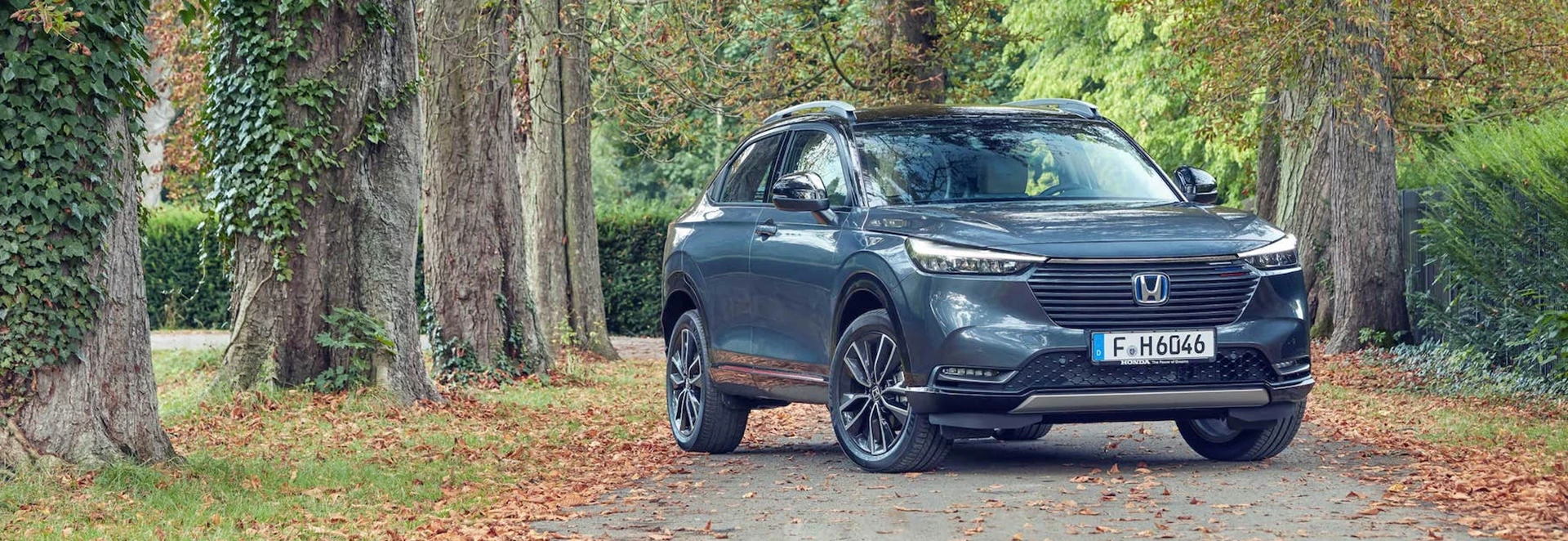Introduction
Honda is really pushing hard in its quest to electrify its range. In fact, by the end of this year, everything that the brand offers will be available with either a fully electric or hybrid powertrain, which really goes to show how it is delivering on its commitments.
That means it’s been steadily whittling through its line-up to bring electrified powertrains across the board. The next model to get this is its popular HR-V which, as a mid-size SUV, sits in a very competitive segment.
It brings a new design with a variety of futuristic touches incorporated into it, while a clever hybrid setup promises a great combination of efficiency and performance. Together with a more tech-focused cabin than before, the HR-V appears to be a sure-fire home run for Honda, but with so many other rivals up against it, is this the case? We’ve been behind the wheel to find out.
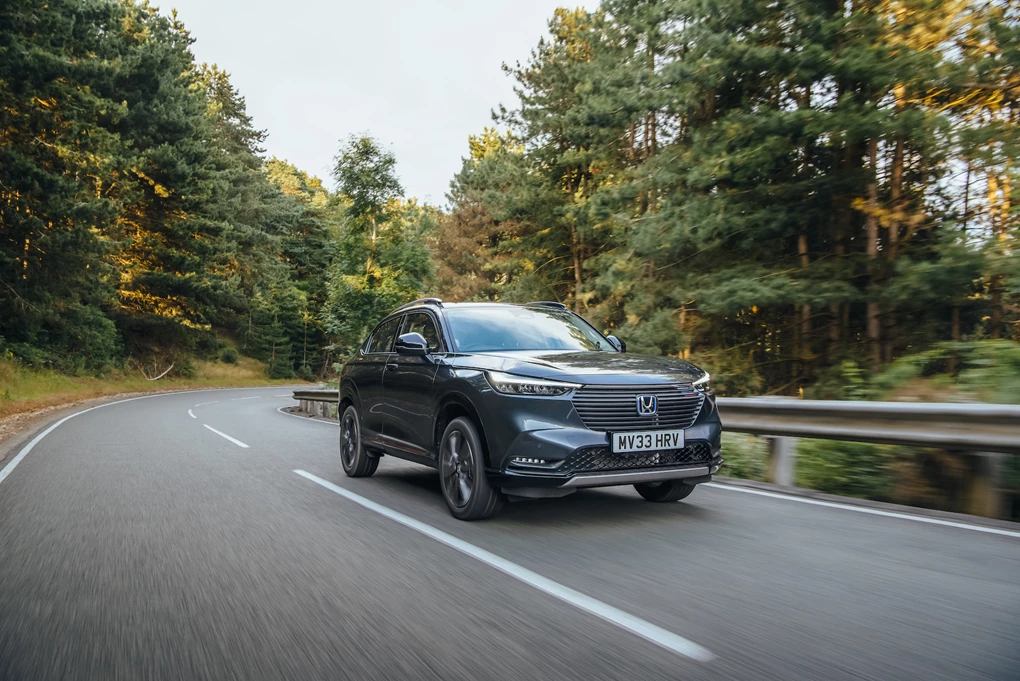
Performance
As we’ve already mentioned, the HR-V utilises a hybrid powertrain. Much the same as the one you’ll find in the smaller Jazz, it combines a 1.5-litre turbocharged petrol engine with a pair of electric motors and a battery. Performance is increased over the Jazz, however, rising from 106bhp to 129bhp, while torque stands at 253Nm. Drive is sent through an e-CVT automatic gearbox and Honda claims that the HR-V should crack the 0-60mph dash in 10.4 seconds. Flat-out, the HR-V will manage 106mph.
Of course, the real emphasis here is on efficiency. So it’s pleasing to see that the HR-V comes with a claimed consumption figure of up to 52mpg, while CO2 emissions of 122g/km are good for a car of this size.
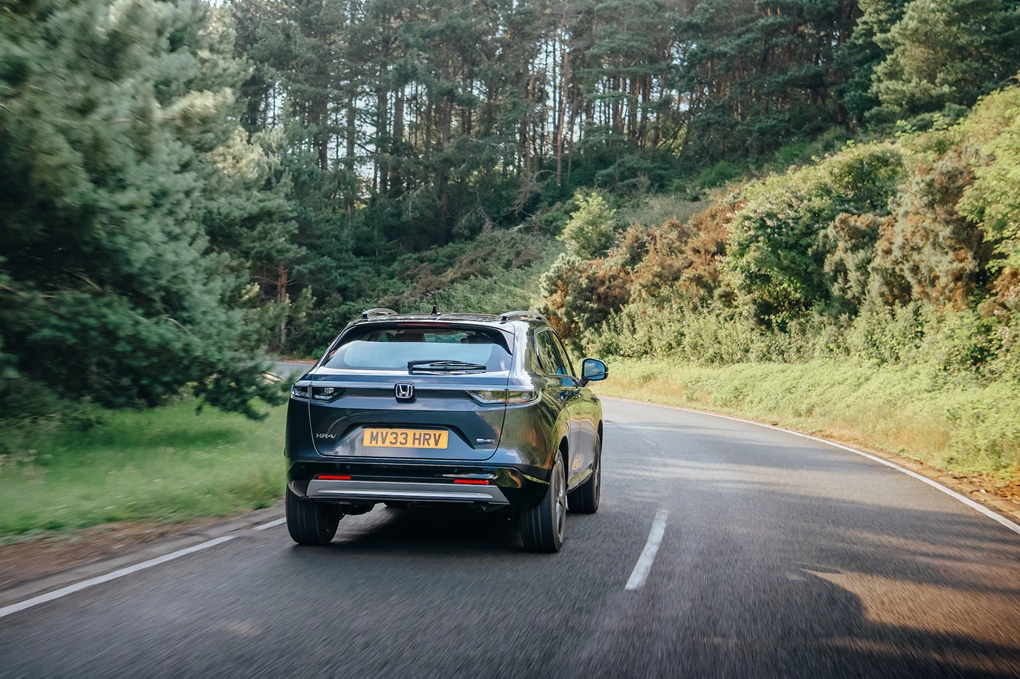
Ride and handling
One of the biggest things you notice when driving the HR-V is how much electric-only driving you get. Now Honda has managed to pack 25 more cells into the HR-V’s battery compared with that in the Jazz and that means you get a lot more energy for zero-emissions driving. As a result, you can travel at lower speeds and around town on electric power for some time without having to trouble the engine for assistance. This alone makes it a really good option for those who predominantly drive in urban areas, while the well-sorted suspension irons out many of the surface imperfections that plague inner-city roads.
Gain a little speed and the HR-V is secure and planted. The car’s body roll is kept in check well, meaning that you needn’t worry about tackling quicker bends for fear of the car feeling like it’ll topple over. That said, it doesn’t offer the same level of engagement as something like a Ford Puma, but it counters this with excellent levels of comfort and refinement. The engine provides more than enough shove for daily driving, too, showing that it’s not just confined to lower speeds.
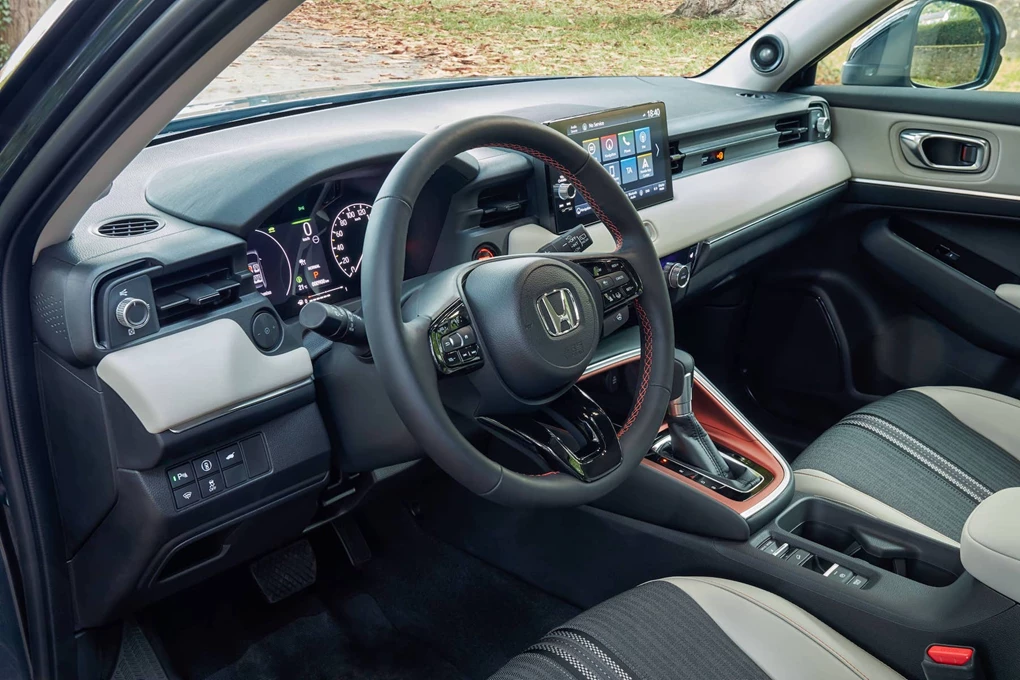
Interior and equipment
You can tell that Honda has put a lot of effort into lifting the level of quality you get from the HR-V’s cabin the moment you step inside. The general look and feel are miles better than before, with plenty of high-end materials and classy switches used throughout the interior.
One of the biggest changes comes through the fitment of a nine-inch colour touchscreen, fitted with shortcut buttons which Honda says reduces the amount of time it takes to perform key tasks by half. It has also been placed higher up the dashboard, meaning that you don’t have to glance down in order to operate it. Honda has also fitted the HR-V with a new air diffusion system which, rather than firing air directly at your face, circulates it around the cabin instead.
The firm’s acclaimed ‘Magic Seats’ are also included with the HR-V. They fold completely flat and it’s easy to put them into place. Doing so makes it much easier to store taller items in the cabin. It’s another way that the HR-V’s practicality levels have been improved.
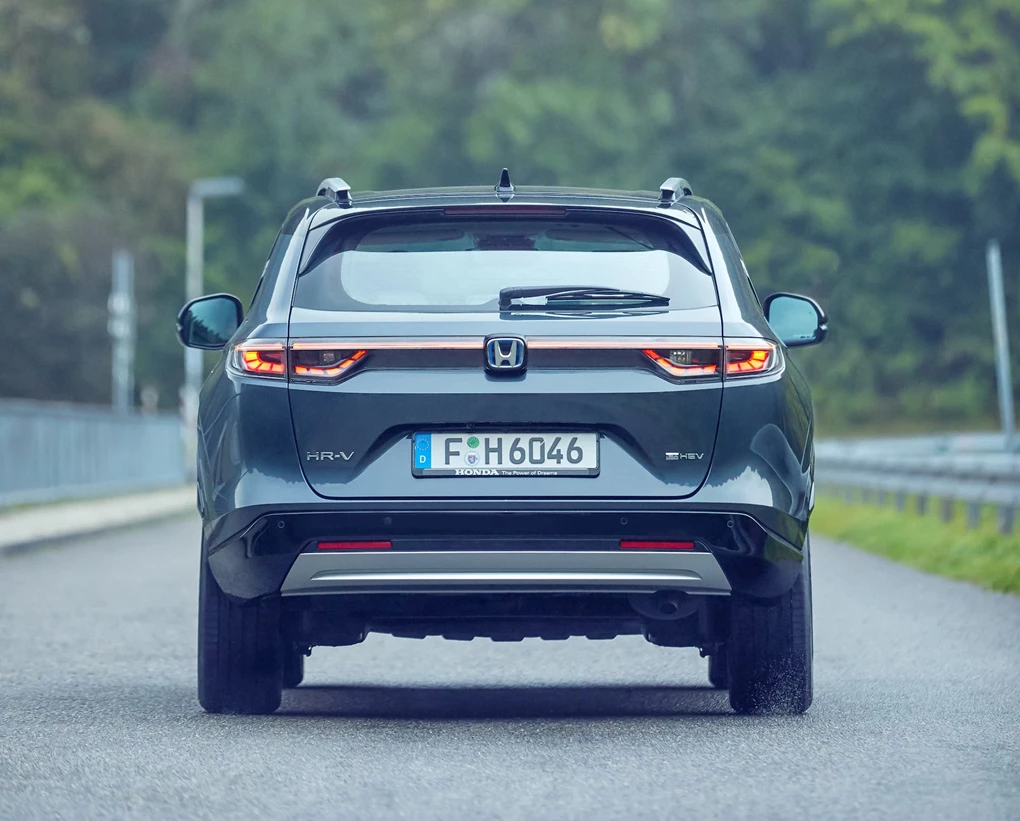
Cost
As with most Honda models, there’s a good degree of standard equipment available on the HR-V - regardless of which specification you opt for. Things kick off with the Elegance trim - priced from £26,960 - and this brings high-end touches such as heated front seats, LED headlights, a digital dashboard setup and the previously mentioned nine-inch touchscreen.
Move up to mid-level Advance cars - priced from £29,910 - and you’ll gain a heated steering wheel, LED front fog lights and the addition of blind-spot monitoring to the HR-V’s already a wide-sweeping range of assistance safety systems. These include lane keep assist, traffic sign recognition and adaptive cruise control.
Finally, there’s Advance Style. With a two-tone paint scheme, it really does stand out against the rest of the HR-V range, while roof bars are a good addition for those drivers who want the option to load items on the roof. Inside, there’s a striking grey and orange colour scheme. At £31,660, it’s the most costly grade available with the HR-V.
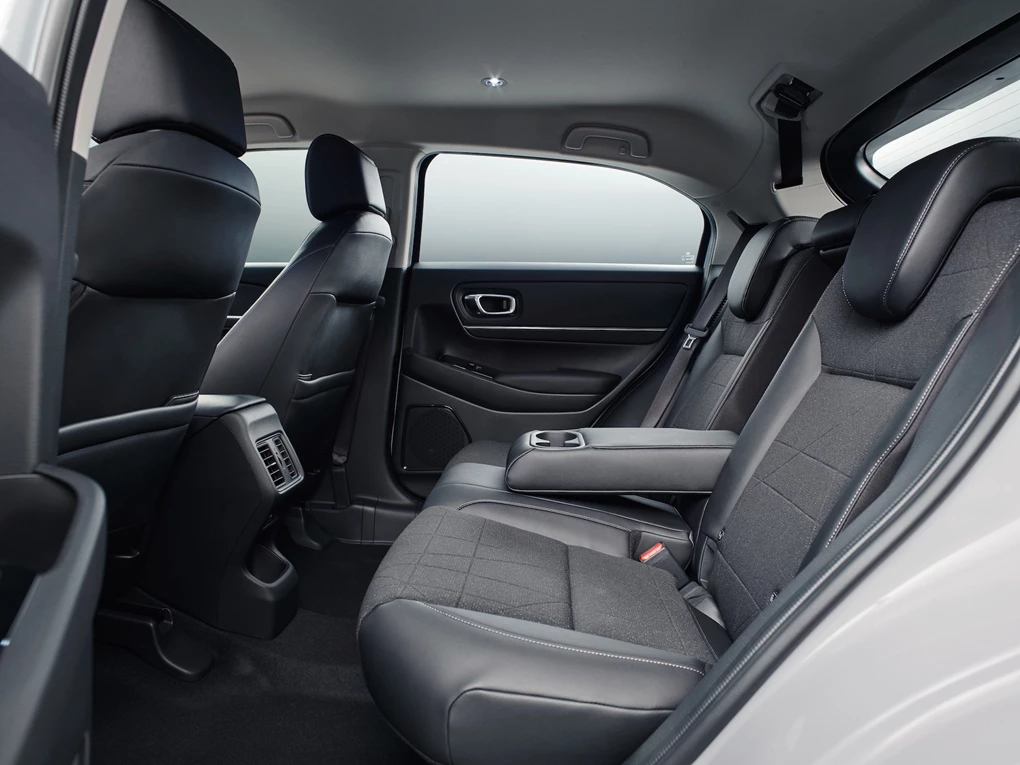
Verdict
The HR-V feels like a fitting extension of Honda’s current range of cars. It’ll no doubt appeal to those who are looking for a comfortable and refined driving experience, as well as those who see a Jazz as too small and a CR-V too large.
The excellent efficiency it brings is impressive, while the level of standard equipment you get makes it very good value for money. Plus, with Honda’s solid reputation for reliability, it’s not very likely that the purchase of an HR-V will be followed by mechanical headaches in the future.
Enquire on a new Honda HR-V
